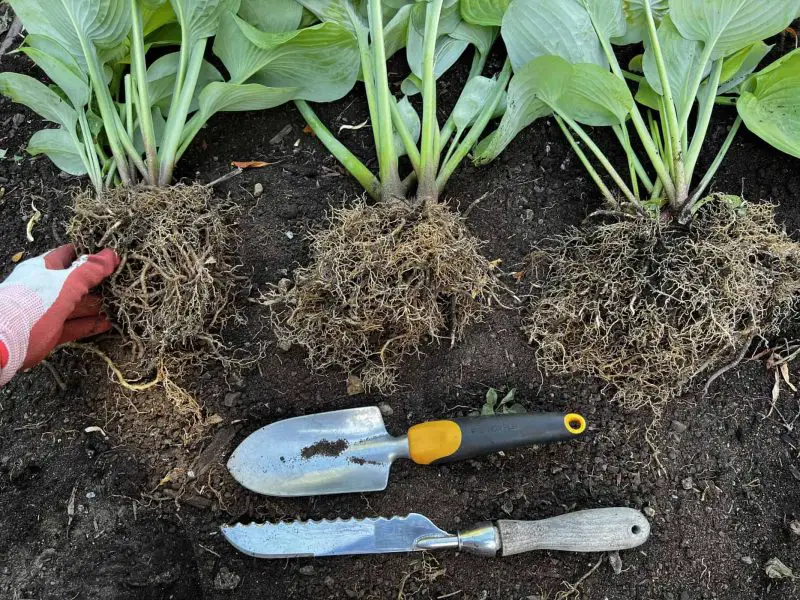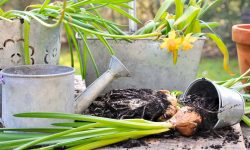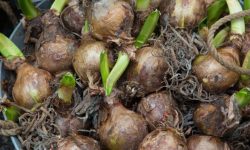Hostas are cherished by gardeners worldwide for their lush, attractive foliage and their ability to thrive in shady garden spots with minimal fuss. These hardy perennials add texture and depth to garden beds, creating a peaceful green backdrop throughout the growing season.
However, like many perennial plants, hostas benefit from occasional division to maintain their vigor and appearance. Splitting hostas helps refresh older plants, control their size, and encourage healthier, fuller growth.
Understanding the best time to split hostas and how to do it properly can make a significant difference in your garden’s success. In this article, we will explore the ideal timing for dividing hostas and share practical tips to achieve the best results.
Understanding Hostas and Their Growth Patterns

Hostas are herbaceous perennials that grow from underground rhizomes. Over the years, a single hosta plant can develop into a large clump as the rhizomes expand and produce new shoots. While this thickening can make a striking visual impact, it also leads to overcrowding within the clump. When hostas become too dense, the inner leaves may receive less sunlight and airflow, causing the plant’s overall health to decline.
Splitting hostas is a method used to separate these dense clumps into smaller, manageable sections. This practice helps improve air circulation, light penetration, and nutrient availability to each division, promoting vigorous growth and lush foliage. Additionally, splitting hostas provides an opportunity to propagate new plants for expanding your garden or sharing with fellow gardeners.
The Best Time to Split Hostas
Timing is crucial when it comes to splitting hostas to minimize stress and ensure the plants recover quickly. The two most recommended periods for dividing hostas are early spring and late summer to early fall.
Splitting Hostas in Early Spring
Early spring is an excellent time to split hostas because it coincides with the start of their active growing season. At this time, you can usually see the first shoots emerging from the soil, which makes it easier to identify where to divide the clump.
Dividing hostas in early spring allows the new divisions to establish roots and grow during the warmer months. The plants have plenty of time to recover from the disturbance and develop into full, healthy specimens. However, since the roots and shoots are still tender, it is important to handle the plants gently to avoid damage.
After splitting, make sure to keep the soil moist and protect the plants from harsh sun or drying winds to reduce transplant shock during this sensitive period.
Splitting Hostas in Late Summer or Early Fall
Another favorable time to split hostas is late summer or early fall, once the plants have finished their main growing cycle and are beginning to prepare for dormancy. At this stage, the roots are mature and robust, which can enhance the plant’s ability to withstand division.
Splitting in late summer or early fall allows the divisions to develop strong root systems before winter sets in. The cooler temperatures and increased soil moisture typical of this time also help reduce stress and support recovery.
It is important not to wait too late into the fall, as cold weather and frozen ground can severely damage roots and hinder successful transplantation.
Signs That Your Hostas Need Splitting
Knowing when to split your hostas is not always straightforward, but several clear signs indicate that a division is needed.
If the center of the hosta clump starts to thin out or the leaves turn yellow and smaller, this suggests overcrowding and reduced vitality. This happens because the crowded roots compete for nutrients, and the dense foliage blocks sunlight to inner leaves.
Another indicator is when the clump has grown very large, creating a bulky mound that crowds surrounding plants or outgrows its space. When hostas become too large, they lose their tidy appearance and may not perform as well.
Finally, if you want to propagate hostas or move them to a different part of your garden, splitting is necessary to create multiple plants and manage growth.
How to Split Hostas for the Best Results
Splitting hostas is a straightforward process but requires care and preparation to avoid damaging the plants.
Preparation and Tools
Start by gathering the right tools: a garden fork or spade for digging, a sharp knife or garden shears for cutting, and water for hydration. Prepare the new planting area by loosening the soil, ensuring it is rich in organic matter and drains well.
Choose a cool, overcast day to split your hostas to prevent excessive heat stress. Avoid splitting during the hottest part of summer or during frosty conditions.
Step-by-Step Splitting Process
Begin by digging carefully around the base of the hosta clump to loosen the soil and lift the entire root ball out of the ground. Try to preserve as much of the root system as possible to help the divisions recover faster.
Once the root ball is free, gently shake or wash off excess soil so you can see the rhizomes clearly. Use your hands or a sharp knife to divide the clump into sections, ensuring each division has at least one growing shoot and a healthy portion of roots.
Plant each division into its prepared spot at the same soil depth as before, firm the soil around it, and water thoroughly. Keeping the soil moist during the first few weeks is crucial to help the roots settle.
Caring for Hostas After Splitting
Post-splitting care is vital to the success of your hosta divisions. Watering regularly and providing the right environment will help your plants bounce back and thrive.
After planting, avoid exposing the hostas to direct, intense sunlight until they are well established. Shade or filtered light is preferable as the roots develop.
Applying a layer of mulch around the plants can help retain soil moisture, regulate temperature, and suppress weeds. Feeding with a balanced fertilizer or compost will support new growth but should be done cautiously to avoid burning the tender roots.
Keep an eye out for pests such as slugs and snails, which can damage young leaves and weaken the plants.
Common Mistakes to Avoid When Splitting Hostas
Even though splitting hostas is relatively simple, mistakes can reduce the success rate. One frequent error is dividing the plant too aggressively or damaging the roots excessively. This can leave the divisions too weak to recover.
Splitting at the wrong time, such as during extreme heat or cold, also stresses the plants and delays regrowth. Neglecting aftercare by failing to water adequately or protecting the plants from harsh conditions can lead to poor results.
To avoid these pitfalls, choose the proper season, handle the plants gently, and provide consistent care post-division.
Benefits of Splitting Hostas at the Right Time
Dividing hostas at the correct time and with proper technique results in healthier plants with fuller foliage and more blooms. Splitting rejuvenates older plants, preventing them from becoming leggy or sparse.
It also controls the plant’s size, preventing overcrowding in your garden beds and allowing companion plants to flourish. Furthermore, division offers a sustainable way to propagate hostas without purchasing new plants.
By following the best practices for timing and care, you can enjoy vigorous hostas that enhance the beauty of your garden year after year.
FAQs About When to Split Hostas
When is the best time to split hostas?
The best times to split hostas are early spring, when new shoots start to emerge, and late summer to early fall, before the plants go dormant.
How often should I split my hostas?
Hostas generally benefit from division every 3 to 5 years or when the clumps become overcrowded and start to decline in vigor.
Can I split hostas during summer?
Splitting hostas during hot summer months is not recommended as heat stress can harm the plants and delay recovery.
How do I care for hostas after splitting?
After splitting, water the plants regularly, provide shade from intense sun, mulch to retain moisture, and avoid disturbing the roots.
Will splitting hostas increase blooming?
Yes, dividing hostas can rejuvenate the plant, leading to fuller foliage and more abundant flowering in the following growing season.
Conclusion
Knowing when to split hostas is essential for maintaining their health and aesthetic appeal. Early spring and late summer to early fall are the prime seasons for division, allowing plants to recover quickly and thrive.
Splitting hostas gently with the right tools and preparing suitable planting sites helps minimize stress. Coupled with attentive aftercare, this ensures your hostas continue to grow strong, lush, and vibrant.
With this knowledge, you can confidently split your hostas and enjoy the many benefits that come from well-maintained, thriving plants in your garden.






